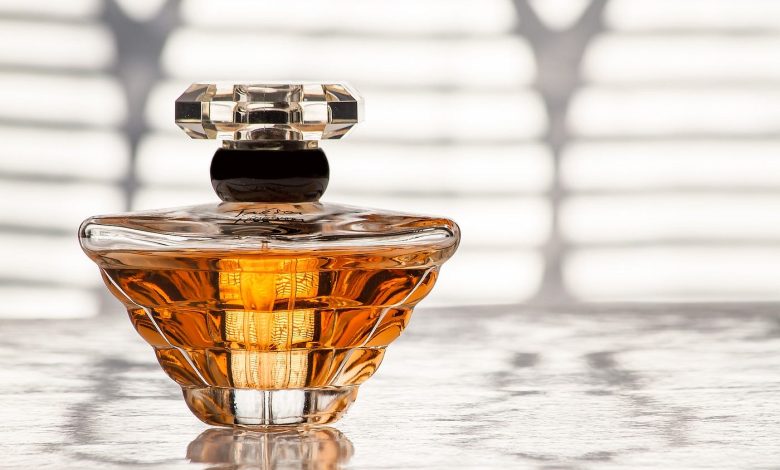Código de Barras Perfume: Decoding the Essence

Have you ever pondered over the enigmatic lines gracing the rear of your perfume vessel? They transcend mere aesthetics; rather, they encapsulate invaluable encrypted data. Within the realm of fragrances, unraveling the Código de Barras Perfume or barcode, harbors the potential to unveil profound secrets about the essence you hold. Let’s embark on a journey into the intricate domain of perfume barcodes and adeptly unravel their mysteries.
Introduction of Código de Barras Perfume
Before delving into specifics, let’s elucidate the essence of a código de barras. Essentially, it manifests as a visually intelligible representation of data, decipherable by machines. Within the perfume domain, barcodes assume pivotal roles in inventory management, supply chain logistics, and, most significantly, assuring consumers of product authenticity.
Understanding Perfume Barcodes
Importance of Barcodes in the Perfume Industry
In the expansive expanse of the fragrance industry, where authenticity reigns supreme, barcodes emerge as indispensable tools for manufacturers, distributors, and retailers. They streamline inventory processes, facilitate seamless sales transactions, and enable efficient product tracking across the supply chain.
Types of Barcodes Used for Perfumes
Not all barcodes are born equal. Within the realm of perfumery, a plethora of barcode variants exists, encompassing Universal Product Codes (UPC), European Article Numbers (EAN), and International Article Numbers (IAN). Each variant serves a distinct purpose, contingent upon geographical nuances and distribution channels.
Decoding Perfume Barcodes of Código de Barras Perfume
Breakdown of Elements in a Perfume Barcode
A typical perfume barcode comprises several constituent elements, each encoding specific insights. These elements encompass the manufacturer code, product code, country of origin, and occasionally, batch codes or expiration dates.
Understanding Country and Manufacturer Codes
The digits adorning a perfume barcode bear profound significance. Initially, they often denote the country code, delineating the product’s manufacturing origin. Subsequently, the manufacturer code unveils the entity responsible for crafting the fragrance.
How to Read a Perfume Barcode
Step-by-Step Guide to Deciphering Perfume Barcodes

At first glance, decoding a perfume barcode may appear daunting. Código de Barras Perfume However, beneath its veneer lies simplicity. By comprehending its structure and unraveling the encoded digits, one can unearth invaluable insights into the fragrance.
Identifying Batch Codes and Expiration Dates
Beyond rudimentary product details, certain barcodes harbor batch codes or expiration dates. These alphanumeric engravings furnish insights into production batches and the perfume’s shelf life, thereby empowering consumers to make informed choices.
Importance of Barcodes for Consumers
Ensuring Authenticity and Avoiding Counterfeit Products
The proliferation of counterfeit perfumes poses substantial risks to consumers and legitimate businesses alike. Código de Barras Perfume Barcodes emerge as a bulwark against such malpractices, affording consumers the means to verify product authenticity prior to purchase.
Tracking Product Information and Origin
Barcodes transcend mere authentication; they offer a conduit for traceability. Through barcode scanning, consumers gain access to comprehensive product information, including origin, ingredients, and peer reviews.
Tips for Using Perfume Barcodes
Checking Barcode Databases for Authenticity
To bolster confidence in a perfume’s authenticity, consider leveraging online barcode databases. These platforms empower users to authenticate products and glean additional insights.
Understanding Barcode Variations for Different Countries
Barcodes exhibit regional variations, necessitating familiarity with prevailing formats. Acquainting oneself with local standards ensures accurate decoding and verification.
Challenges and Limitations
Issues with Barcode Readability and Accuracy
Despite their myriad benefits, barcodes contend with inherent limitations. Código de Barras Perfume Factors such as damaged packaging or subpar printing quality can impede readability, precipitating errors in scanning and data retrieval.
Counterfeit Prevention Measures
Efforts to combat counterfeit products persist, yet malefactors devise increasingly sophisticated techniques to replicate barcodes. Manufacturers must adopt robust anti-counterfeiting measures to safeguard brands and consumer trust.
Future Trends in Perfume Barcoding
Advancements in Barcode Technology
As technology marches forward, barcode systems evolve in tandem. Enhanced scanning capabilities and embedded security features herald a future replete with heightened efficiency and fortified defenses against counterfeit activities.
Integration of QR Codes and Digital Authentication
In tandem with traditional barcodes, QR codes ascend in prominence within the fragrance realm. These matrix barcodes, with their expansive data storage and smartphone compatibility, furnish consumers with instantaneous access to product information and authentication services.
Conclusion
In the tapestry of perfumery, the unassuming código de barras assumes the mantle of a silent sentinel, shielding consumers from counterfeit wares and endowing them with profound insights. Armed with the knowledge to decode perfume barcodes, one can navigate the fragrance landscape with assurance, ensuring each spritz heralds an authentic olfactory odyssey.
Frequently Asked Questions (FAQs)
- Are all perfumes required to have barcodes? Yes, the majority of perfumes are packaged with barcodes, facilitating seamless inventory management and sales transactions [1].
- Can barcode scanning apps detect counterfeit perfumes? While barcode scanning apps offer product insights, their efficacy in detecting counterfeit perfumes may vary. Supplemental authentication methods are advisable [5].
- Do counterfeit perfumes have fake barcodes? Counterfeiters often replicate barcodes to confer legitimacy upon their products. However, disparities in packaging, scent, and pricing can betray their authenticity [5].
- Are there any privacy concerns associated with scanning perfume barcodes? Barcode scanning primarily retrieves product data, posing minimal privacy risks. However, caution is advised when employing third-party apps, ensuring compliance with data protection regulations [5].
- How can I report counterfeit perfumes detected through barcode scanning? Suspected encounters with counterfeit perfumes can be reported to pertinent authorities or brand owners. Furnishing comprehensive information, including barcode numbers, facilitates investigations [5].





Kudos to you for creating such an engaging and beautiful website.